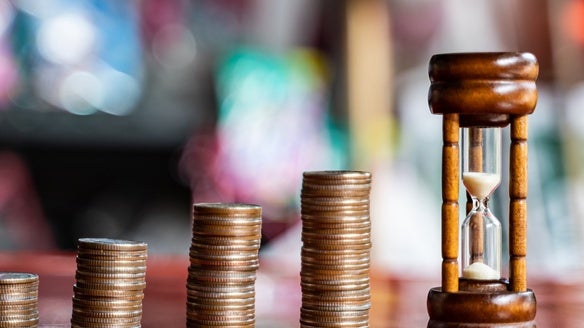
Certificates of deposit (CDs) can be valuable options for savers looking to earn good returns on funds not needed presently. CD rates rose modestly over the past week, according to data from Curinos, as the Federal Reserve continues its efforts to mitigate inflation by raising short-term rates. The national average for a 6-month CD with a $25,000 deposit stands at 1.25%, while a 1-year CD currently yields 1.51%. Additionally, 2-year and 3-year CDs offer average rates of 1.48% and 1.44% respectively.
Three-month CD rates
Rates on three-month CDs have ticked up since last week by one basis point to 0.84% APY as of May 30, 2023. The average APY is up 15 basis points from a month prior.
The current national high for a three-month CD is 5.15%, which would earn more than $315 in interest with a $25,000 deposit.
Six-month CD rates
By choosing a top-rated six-month CD, you benefit from a winning mix of competitive interest rates and a short-term commitment.
The national average APY for six-month CDs is 1.25%, up somewhat from 1.23% last week and 1.13% one month ago.
The current top national rate for a 6-month CD is 5.41%, according to the data available from Curinos. Shopping around can help you find better deals.
With that rate, you’d earn almost $670 in interest if you deposited $25,000.
One-year CD rates
If you’re willing to lock away your savings for 12 months, you can score even better rates. One-year CDs can give you returns as high as, or even higher than, longer-term options.
Rates on 12-month CDs are increasing. The national average APY is 1.51%, up one basis point from last week and seven basis points from a month before.
The current national high for a 12-month CD is 5.37%, which would earn around $1,340 in interest with a $25,000 deposit.
Two-year CD rates
Interest rates on CDs with longer terms, such as those spanning two years, are also on the rise.
The national average APY is 1.48%, a slight increase of less than a basis point last week and five basis points from one month ago.
Right now, the highest national rate for a 24-month CD is 5.22%, which would earn nearly $2,680 in interest on $25,000 in savings.
Three-year CD rates
The national average APY for a three-year CD stands at 1.44%, a point higher than last week and up five basis points from 1.39% a month ago.
The highest rate was 5.63%, which would net roughly $4,465 in interest if you invested $25,000.
Methodology
To establish average certificate of deposits (CDs) rates, Curinos focuses on CDs intended for personal use. CDs that fall into specific categories are excluded, including promotional offers, relationship-based rates, private, youth, senior, student/minor, affinity, bump-up, no-penalty, callable, variable, step-up, auto transfer, club, gifts, grandfathered, internet-only and IRA CDs. The average CD rates quoted above are based on a $25,000 deposit.
Frequently asked questions (FAQs)
You’ll need a few key details to open a CD: your name, address, Social Security number, government-issued ID and phone number. You can open a CD online or in person, but you’ll probably find better rates online. Once you get the green light, you can fund the CD with cash from a linked bank account or one that’s not affiliated with the bank at all.
A CD ladder helps you take advantage of higher rates offered by longer terms without tying up your money indefinitely.
For instance, let’s say you have $12,000 to invest and decide to create a ladder of three CDs. You invest $4,000 each into one, two and three-year CDs. When the one-year CD matures, you convert your principal and earned interest to the higher-rate 36-month CD, and do the same with the 24-month CD the next year. This way, you’ll eventually end up with three 36-month CDs with high APYs, with one maturing each year.
Here’s how you can build your own CD ladder:
- Split the amount you want to invest by the number of CD terms you’d like.
- Research the best CDs to find top providers and the best rates for various lengths.
- Set up the CD accounts you’ve chosen.
- As the CDs mature, reinvest the cash into longer-term CDs.
The second step is crucial. Just because the Fed has raised interest rates doesn’t mean you’ll get the same or even similar rates from different financial institutions for the same CD term.





